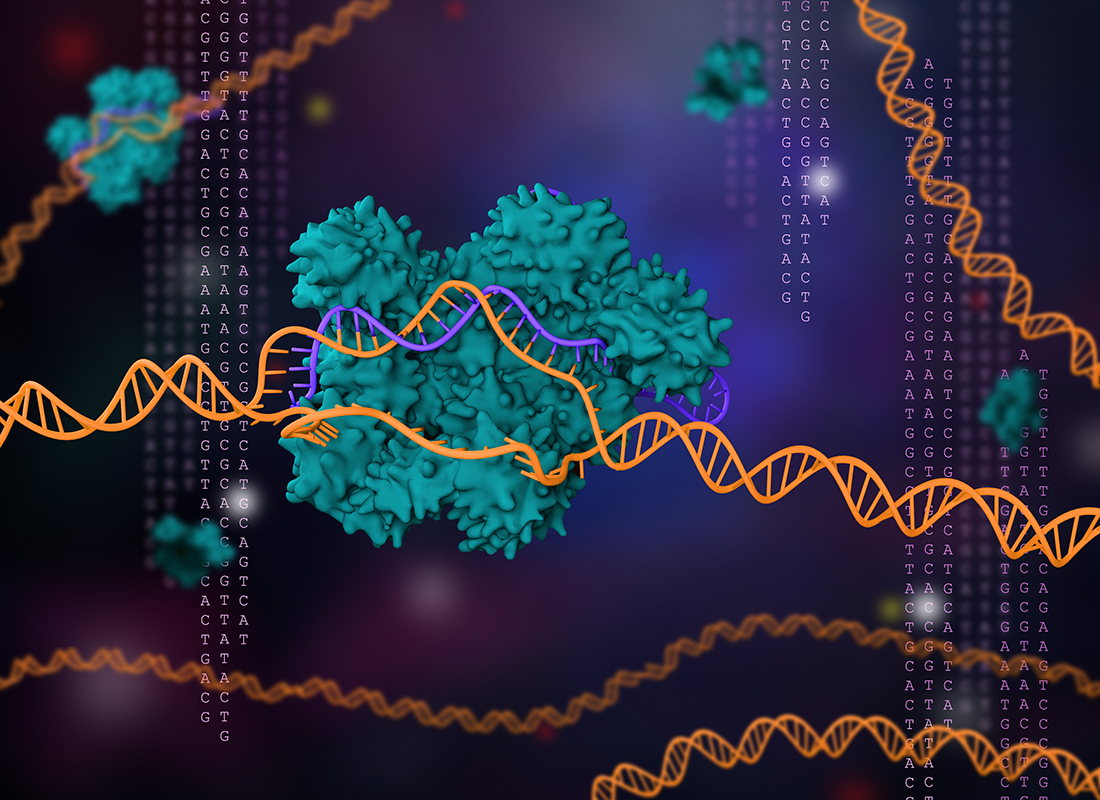Simplifying At-Home Tests with AI
A new assay uses AI-optimized enzymes to simplify and increase the accuracy of rapid pathogen detection.

At-home clinical testing has seen substantial growth and innovation over the past half-century, but these tests are still plagued with challenges—chief among them accuracy. The cost, complexity, and equipment requirements of gold-standard laboratory tests make it impossible to replicate their capabilities offsite, particularly when assays require strict temperature or environmental controls.1,2 Now, a team of researchers at the University of Florida has used artificial intelligence (AI) technology to help design a two-step nucleic acid detection assay that can take place in a single test tube at a single temperature. The goal? To simplify nucleic acid detection for point-of-care and, eventually at-home testing.3
Solving the Sensitivity Gap
The rise of COVID-19 self-testing spotlighted the sensitivity gap between rapid antigen tests and lab-performed molecular assays and demonstrated that this gap increases in real-world settings where tests are performed by nonexperts.4,5 With potential issues arising from incorrect storage, accidental contamination, poor sample collection or handling technique, misread results, and more, it’s reasonable to conclude that—even for well-known at-home tests—complexity is cause for concern.
CRISPR/Cas-based systems are a promising tool for nucleic acid detection,6 offering molecular sensitivity without the high costs and specialized equipment needed for PCR. Because clinical applications of the technology generally require detection of very low nucleic acid concentrations, CRISPR/Cas diagnostics are often coupled with a preamplification step, most commonly recombinase polymerase amplification (RPA) or loop-mediated isothermal amplification (LAMP). Unfortunately, although LAMP offers greater specificity and easier access to reagents, which are widely available through commercial channels, it also requires a higher reaction temperature (60–65°C), which can inhibit the enzymatic reaction or even destabilize the Cas enzyme itself.
Optimizing Assays Using AI
To address this issue, the University of Florida team applied the machine learning skills of protein modeling tools AlphaFold and SWISS-MODEL to develop a thermostable version of the Cas enzyme, eBrCas12b, for use at temperatures up to 67°C.3 “It’s very challenging for any human to do this kind of analysis on an enzyme,” said lead author Piyush Jain, PhD, assistant professor of chemical engineering at the University of Florida, in a press release.7 “[Using AI], we didn’t have to spend years; we could make these improvements in months.”
By combining a reverse transcription LAMP (RT-LAMP) reaction with a CRISPR/Cas system using the newly engineered eBrCas12b and adding sucrose (hypothesized by the researchers to further stabilize the enzyme against heat and chemical denaturants), the researchers were able to achieve a one-pot reaction capable of amplifying and cleaving relevant nucleic acid sequences for detection.
Clinical Validation for Virus Testing
The assay, named SPLENDID, was then applied to human serum samples infected with hepatitis C virus for clinical validation. After using SPLENDID to test 80 samples (40 infected and 40 uninfected), the researchers obtained seven false negative results and one false positive, yielding a sensitivity of 82.5 percent, a specificity of 97.5 percent, and an accuracy of 90.0 percent against qRT-PCR results. Breaking the results down by genotype yielded a sensitivity of 91 percent for genotype 1 (constituting approximately half of all HCV cases globally8 and 34 of the 40 infected samples), 50 percent for genotype 2 (four samples), and 0 percent for genotype 3 (two samples). This is not reflective of the assay’s capabilities, but of the specific primers and guide RNA used in the RT-LAMP stage, which can be adjusted to more effectively amplify diverse HCV genotypes.
A SARS-CoV-2-specific SPLENDID assay was also validated using patient saliva samples (29 infected and 37 uninfected). Here, SPLENDID yielded 93.1 percent sensitivity, 100 percent specificity (no false positives), and 97.0 percent accuracy, whereas RT-LAMP alone—a common approach to SARS-CoV-2 molecular testing9—yielded 96.6 percent sensitivity, 78.4 percent specificity, and 86.4 percent accuracy.
A Molecular Diagnostics Match
Overall, SPLENDID exhibited a sensitivity, specificity, and accuracy similar to those of other nucleic acid detection methods with the added simplicity and convenience of a one-pot assay that can be conducted in the home or at the point of care. The authors further highlight the speed of the reaction (approximately 20 minutes for the SPLENDID assay alone or one hour for the full process including sample extraction) and the potential to lyophilize reagents, meaning that it may be possible to store these tests without special equipment or facilities.
These characteristics, coupled with the ability to design primers and guide RNAs for a wide range of pathogens, make the SPLENDID assay a promising candidate for infectious disease diagnosis in resource-limited settings. To achieve this, though, further development is needed; the authors emphasize the importance of careful primer design and the need to optimize the system for detection of other genotypes and pathogens, as well as for field use. Nonetheless, the early success of the SPLENDID system serves as proof of concept for not only a new approach to diagnostic testing but also the use of AI to support protein engineering for test optimization.
References:
- https://jamanetwork.com/journals/jamainternalmedicine/fullarticle/2791915
- https://www.ijidonline.com/article/S1201-9712(21)00399-4/fulltext
- https://www.cell.com/cell-reports-medicine/fulltext/S2666-3791(23)00151-9
- https://journals.asm.org/doi/full/10.1128/jcm.01107-21
- https://www.thelancet.com/journals/lanres/article/PIIS2213-2600(20)30453-7/fulltext
- https://www.nature.com/articles/s41551-021-00760-7
- https://news.ufl.edu/2023/05/ai-home-hepatitis-test/
- https://www.sciencedirect.com/science/article/pii/S0168827814005261
- https://www.sciencedirect.com/science/article/pii/S0166093421003311
Subscribe to Clinical Diagnostics Insider to view
Start a Free Trial for immediate access to this article